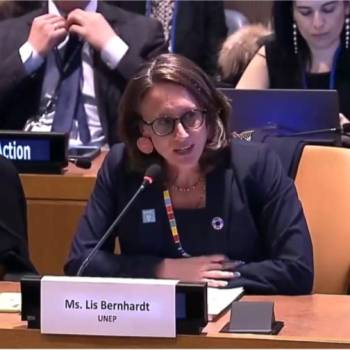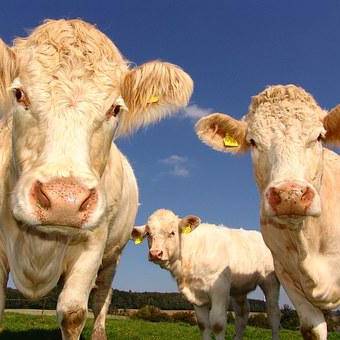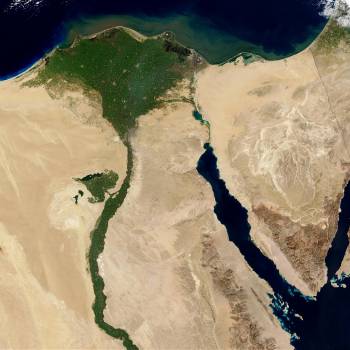
The expression “Green Taxonomy” was born in the ESG Finance world about 5 years ago after the G20 Green Finance Study Group and other key organizations pointed out in a couple of reports that we needed them for two main reasons: a) to measure the financial flows to the Green Economy and therefore monitor progress over time; b) to ensure financial players (and other stakeholders) that certain activities and projects might be considered green. This latter is of foremost importance for new technologies, that might be considered too risky by traditional banks or investors, but are exactly what is necessary to achieve a green or a sustainable economy. The evaluation by technical experts of the value/technical feasibility of these technologies provides the ground and certainty for the market to give them scale, especially if, at the same time, financial regulators start to require that financial institutions disclose the percentage of their portfolios that is aligned with green taxonomies and capital markets regulators require that companies disclose the percentage of their production of their revenues (or both) that is aligned with them.
Even before that, however, a few financial regulators, such as the banking regulator of China, had already defined (in 2012), at least in a general way [1], which activities they considered as frameable into “green credit” and had even, after the first years, concluded that the default rate is much lower for them than it is for traditional loans. An academic study published in 2018 analysing 72% of Chinese banking market (24 banks) also concluded that the default rate was lower in the banks portfolios with a higher proportion of green loans.
In the investments market, there was already an offer of investment funds with some sort of ESG focus (either to prevent environmental and social harm or to provide positive impacts) – and the impact investing approach had already developed indicators to measure the environmental or social positive impact that it aims to achieve, such as the Impact Reporting and Investment Standards (IRIS), created by the Global Impact Investing Network (GIIN). Conversely, the market frameworks for Green Bonds preexisted to this discussion of taxonomies and now have progressed to include Social and Sustainable Bonds, Sustainability-linked Bonds (and Green Loans for the lending market). Actually, these frameworks didn’t explore much the definition of “green, social or sustainable activities”, sometimes only listing examples [2] and focussing more on procedures pre and post-issuance. In recent years, many regulators [3] have addressed the topic too (sometimes only for sovereign bonds), and, when doing so, many defined the type of green/social/sustainable activity that can be financed through these bonds, never with a lot of detail, but with a purpose similar to a taxonomy.
Since then, the EU decided to elaborate a Green Taxonomy for investments (to be extended to companies ESG disclosures), and is developing the first steps of a Social Taxonomy as well. The strategy used by the EU was to produce legislation rather than only financial regulation addressing the topic and it divided the green strategy into six objectives. This division seemed a good idea initially, to make clear the different environmental benefits expected (climate change mitigation and adaptation, ecosystems conservation and restoration, water courses conservation and restoration, circular economy and pollution prevention and countrol), but it turned out a big problem once the format of the phased approach adopted ended up making that climate-related objectives were addressed separately and not in an interconnected way with the other objectives. Just to illustrate the problem, the IPCC-IPBES report published last June brings tons of evidence of why climate and biodiversity objectives (either to prevent harm or to create solutions, as a green taxonomy proposes) cannot be addressed separately – an integrated approach is required.
The “do no harm” principle (any activity included in the taxonomy for one objective can’t harm any of the other five objectives) and the “social safeguards” (also included in the EU taxonomy) are far from enough. The initial climate focus meant that there was no consideration of potential synergies with other environmental benefits, such as reduction of waste (resulting from biogas energy deriving of domestic waste or of sew) or ecosystems conservation – and nature-based solutions is the opportunity that many stakeholders are now focussing in order to combine climate and biodiversity benefits. What we see from the EU Taxonomy in the energy sector, thus far, leads to the conclusion that the “do no harm” principle is not being taken seriously – nuclear energy, for example, has huge risks and/or negative impacts; a life-cycle approach should be adopted for solar energy, whose panels depend on mining activities and their final destination is a very relevant issue; etc. Another easy example of need of an integrated approach, beyond the climate agenda, is the recycling of waste, which contributes to pollution prevention and control, but also might use water and energy and the environmental balance has to be considered in the context of each use in order to assess when it should be included or not in the taxonomy.
Another impactful mistake is the fact that the EU Green Taxonomy is totally binary, putting in the same level, going back to examples of the energy sector, off-shore wind energy (with lower costs and much lower negative environmental and social impacts and very low GHG emissions), biogas (with very low environmental and social impacts and benefits to pollution prevention and control and to circular economy) and, according to the recent plans, nuclear energy! The taxonomy once considered an example for the world, because of its promise of technical grounds, is moving farther and farther from that mindset…
Instead of binary taxonomies, we need taxonomies that consider the degree of environmental benefits (it’s not enough to be relevant, as required in the EU taxonomy, we need to know how relevant), and also their extension, comprising or not more than one benefit, and how low are the environmental and social negative impacts and risks. We need different “shades of green”, as already done by Norwegian consultancy CICERO since many years ago for Green Bonds. And a good way to develop taxonomies is to start with topics/activities that bring only environmental benefits, such as technologies/activities that provide water efficiency, energy efficiency, efficiency in the use of raw materials or other inputs, increase in safety levels for workers, affected communities and/or consumers, pollution reduction, conservation and restoration of ecosystems. It doesn’t make sense to spend a lot of (human) energy discussing if natural gas or nuclear (electric) energy is “green” – as it’s happening right now in the EU, while the most obvious activities, such as agroforestry/regenerative agriculture, fires prevention and detection technologies and many others linked to the other environmental objectives don’t have a “green tag” yet!
Moreover, it is easy to understand that we won’t solve environmental and social problems anywhere in the world if we finance positive impacts while at the same time keep financing environmental and social harm. Unfortunately, the fact that, for example, renewable energy generation expands doesn’t imply that fossil-based energy decreases in absolute figures (so, in the end of the day, GHG emissions continue the same). For instance, there are poorly planned projects where clean energy generation is financed without making sure the distribution of this energy will be ready at the same time… And we all know pretty well the myth of eternal economic growth (which obviously caused ecosystems degradation and climate change), that lead to macroeconomic policies whose focus is GDP growth instead of population welfare and environmental sustainability. It’s perfectly possible that renewable energy provision increases while at the same time fossil-based energy and fuels stay at the same size (if not increasing too!) – fossil tax subsidies are not being elliminated yet, as shown by these recent data, and we all have read about how many banks and investors portfolios are still financing fossil energy and fuels, including new infrastructure projects. There’s no guarantee either that electric cars (whose fule has lower GHG emissions) will always be powered with clean energy. What is guaranteed, unfortunately, is that they use batteries made of Lithium, whose extraction has a huge environmental and social negative impact. And the same can be said about the protection of ecosystems – we might invest a lot on restoration activities, but if their degradation (through either pollution or land conversion) is still being financed the same way, we won’t make progress. It’s mathematics.
Developing Green Taxonomies is also certainly positive to create new business opportunities (the market is interested in them, of course), but, if we are really serious about the environmental objectives, we need to address deeply also the other side of the equation, which is the clear identification of where the undesirable impacts are. Of course the radical solution would be to simply forbid certain economic activities – and this is already the case for a big part of pollution and land conversion, for example, but enforcement is poor in many places. However, this can’t happen before the “new economy” is “on”, with enough clean energy provision for all. It must be remembered that in many countries this is not yet guaranteed, so there’s an immense opportunity to do it right from the beginning, providing the cleanest possible energies to those who now have none. Therefore, we also need a “tag”, as done recently for the first time by a financial regulator (the Indonesian) for the activities that, even if illegal, must be restricted and, if possible, discontinued – Indonesia issued a regulation for Green, “Yellow” and “Red” activities. The ideal is to establish also “shades of yellow and red”. And we need social impacts to be considered as well.
Finally, it’s essential to remember that any serious taxonomy must consider also the location of the activities! A project might be green in one area and yellow or red in another, because if affects negatively a biodiversity hotspot, an indigenous community, an important watershed and so on… The UNEP-WCMC report published in 2020 illustrates very clearly why it’s useful to consider (using an integrated approach, as said before) the location of the activities both to avoid carbon emissions from land conversion and to preserve biodiversity – it saves space, time and money, once there are many sites whose conservation is able to bring benefits for both sides.
Once regulators provide this general framework considering the activities/ technologies to be included in a taxonomy and mapping locations according to environmental and social sensitivity, it’s financial actors’ role to assess individually each potential company to be financed (or already included in their portfolios), according to key environmental and social performance indicators appropriate for each industry.
Consistent industry indicators, by the way, should also be the departure point for any taxonomy that adopts a strategy similar to the one of the EU, that focussed on industries and then mapped the green technologies – in addition to mapping cross-sectoral technologies (such as the ones who provide energy efficiency). If we understand the most relevant environmental risks and (positive and negative) impacts of each industry, even the risk mitigation or the reduction of a negative impact might be included in a “green/social” taxonomy, especially when there’s still no available technology that elliminates completely the risk or the negative impact. So, each key indicator might ilustrates the risk itself and the opportunity to mitigate this risk. The challenge on this regard is to develop a sound set of industry indicators, once the most used ones, such as SASB and EFFAS ESG KPIs, and also indicators developed by specific industries, many times offer one of these problems: a) key obvious issues are not included (such as tailings management in mining; the available standards/indicators simply address the topic as if the only issue involved was the safety of dams, while there are many other safer technologies of tailings management available and already adopted by mining companies), another example: a key topic such as mines closure is not included at all in EFFAS for the mining sector; b) indicators are not relevant – EFFAS, for example, mentions, for every industry, “energy efficiency” while in fact it requires the disclosure of absolute figures of energy consumption, without any correlation with production (in order to measure efficiency, we need to relate energy with production, the same way we need to relate distance with time to measure speed); c) key topics are mentioned, but not translated into actual indicators; d) no weight is assigned to each indicator [4]. So, building a consistent set of environmental and social indicators for each industry (starting with the industries with the most relevant risks and negative impacts) is a first required step to a sound environmental and social taxonomy that goes from the negative side (risks and unavoidable negative impacts) to the positive side (benefits).
Furthermore – and that should go without saying, the financial market must stop to finance violations to environmental regulations! Unfortunately, the reality couldn’t be far from it – a recently report published by Finance for Biodiversity explores the links between finance and environmental crimes (the most serious form of violation, but not the only one) and that makes clear how the diligences of the financial market on this regard are very far from enough. The diligences should comprise the whole value chain, for instance, including to avoid money laundry. An easy example is the gold extraction in Brazil: the study mentioned here illustrates an amount of gold involved in strong suspicion of illegality that is equal to half of the country’s gold production in the mentioned period.
None of that is easy, but there are certainly low hanging fruits to start with – prioritizing the inclusion of activities that bring the most relevant and multiple environmental and social benefits in “Green” (not understood as “environmental only”, but as “go ahead!”) and putting a “dark red tag” in the ones that will probably be even forbidden in a near future, because of the incontroversial harm they cause (making impossible their inclusion in any pathway transition) should be the obvious starting point. This is not, however, what we are seeing everywhere – Green Taxonomis are being developed in a lot of countries right now all over the world, but this is not the common rationale. Hopefully, regulators and public policies decision-makers start to act more wisely! The integrated and comprehensive approach that is needed is certainly not something we can expect from the market alone – actually, the market needs a framework to move in the direction required by a society that is dependent on nature eventually to fulfil all our needs.
[1] Waste management, energy efficiency, water efficiency, renewable energies, ecosystems restoration, etc.
[2] This is totally valid for International Capital Markets Association (ICMA)’s Principles, while Climate Bonds Initiative (CBI) addressed, through its sector-specific standards, the activities to be included.
[3] Argentina (2019 – green, social, sustainable), Chile (2020 - sustainable), China (2015/2020 – green), Colombia (2020 – green), Dominican Republic (2020 – green, social, sustainable), Egypt (2019 – green), EU (2020 – green), India (2017 – green), Indonesia (2017 – green), Japan (2017 – green), Kenya (2019 – green), Morocco (2018 – green, social, sustainable; 2021 – gender), Nigeria (2018 – green), Pakistan (2021 – green), Paraguay (2020 – SDGs), Peru (2019 – sustainable), Phillippines (2019 – green, social, sustainable), Thailand (2020 – green, social, sustainable), Vietnam (2021 – green, social, sustainable)
[4] A first step in this direction is made by ENCORE, that classifies each material environmental impact as very low, low, medium, high or very high. But a final classification should necessarily consider location.
Author
Sustainable Finance and Consensus Building Expert
Posted on 2022-02-12 17:34









Comments